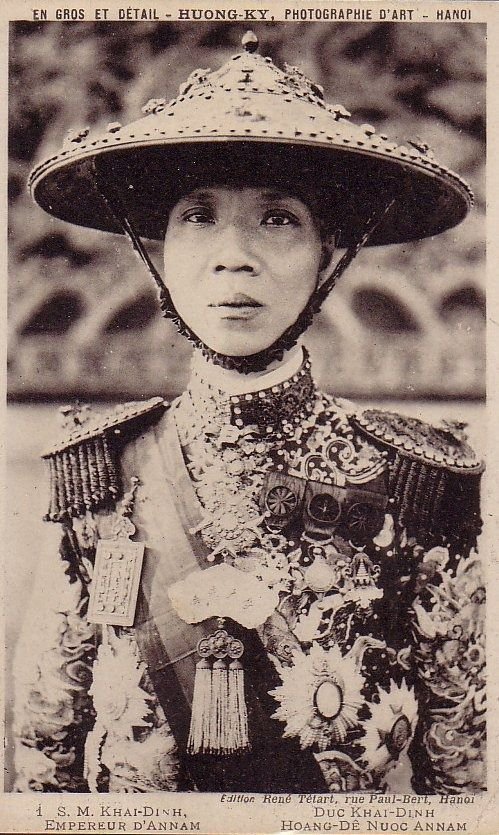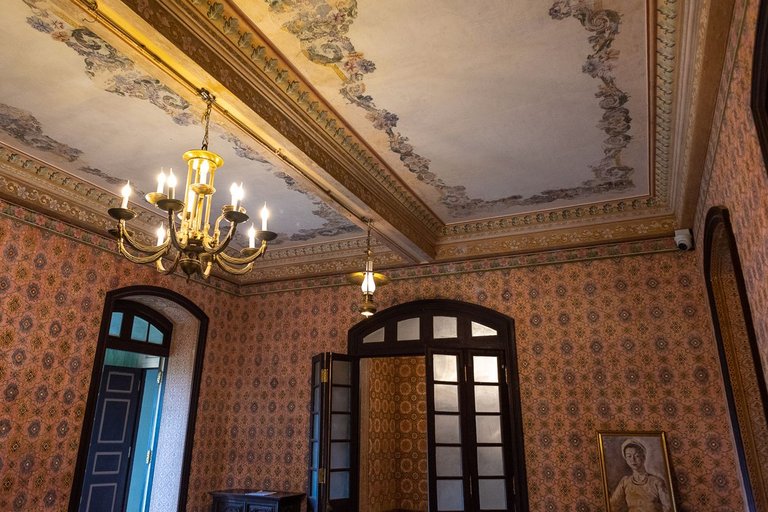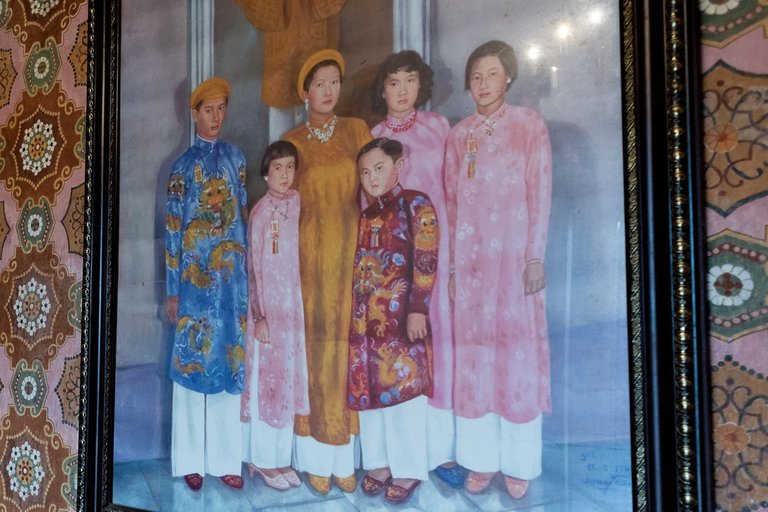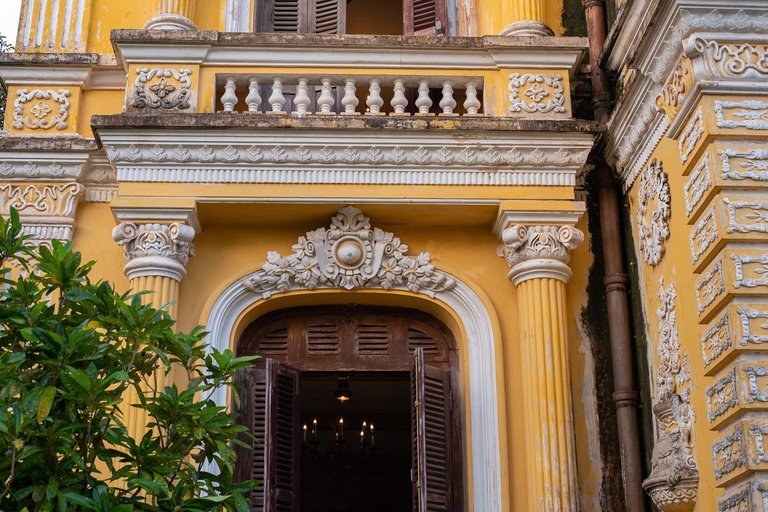
You've never heard about emperors of Vietnam? This was how they appeared: there was a turbulent period at the turn of the 18th and 19th centuries, a period of wars between different factions in Vietnam. In the end, the lord of the South won. He united Vietnam from Saigon to Hanoi in 1802 for first time in history and declared himself the emperor.
Several decades later, a former ally of the dynasty, the French, decided to subjugate Vietnam. In 1883, their fleet attacked the Vietnamese capital of Hue. The Vietnamese emperor entered into negotiations and recognized the French protectorate.
The power of the Vietnamese imperial dynasty was restricted but life continued to go on. Numerous temples, mausoleums, and royal residences were constructed at that period, and one of them was An Dinh Palace. Emperor Khải Định built it in 1919 to stay away from the Imperial City where he had too many enemies. Later, An Dinh Palace became home to the last Emperor and his family.
The facade. "Neo-Renaissance and Neoclassical elements with Asian influences"
Years passed, one war came after another; the Vietnamese monarchy lost its influence and power. The palace was confiscated and eventually turned into a student hostel in 1975 when the Communists captured the South. The building fell into disrepair.
Happily, in the 2000s, Germans came with financial and technical support to restore this beautiful building.
Sharing what I found in the palace on Nevember 16, 2024.
Let's take a look at the interiors:
This statue is in the middle of everything. The young person would be known as Bảo Đại, the last emperor of Vietnam.
And that's his father, the founder of the palace, Emperor Khải Định:

This emperor seems to me to be a dramatic personality. Doubt he enjoyed being a ruler with nominal power surrounded by all sorts of haters. In addition, there were another kind of chains hanging on him (source):
The emperor had 12 wives but he had only one son, and this matter caused much speculation. He didn't like women, preferred men! According to the opinions of some contemporary psychologists, Emperor Khải Định was not impotent but simply disliked being intimate with women.
Moreover, it was known Khải Định "was close to his male guard, Nguyễn Đắc Vọng, and always slept with him" (source).

The Emperor was also known for other peculiarities (source):
During palace festivals featuring dances by the concubines, Khải Định found them boring. Sometimes, he would order the dances to be stopped and replaced with performances by male dancers. Khải Định enjoyed these performances and even ordered the male dancers to wear makeup, blush, and lipstick, and to dress in flamboyant clothing. According to Mr. Xuân's research, Emperor Khải Định also shared a fondness for fine clothing, designing colorful outfits, wearing a lot of jewelry and women's conical hats.
Khải Định ruled only for 9 years (1916-1925) and died at the age of 40. No idea if Khải Định was a good person or one spoiled by money but, anyway, it's sad that he lived that short. I even had a thought of writing a fictional story about the love between Khải Định and his bodyguard Nguyễn Đắc Vọng who got tired of the treacherous imperial court and French puppeteers, eventually faked the emperor's death, and incognito went on an indefinite vacation to Bangkok to enjoy Thai drag queen shows and live the dolce vita in the Kingdom of Siam. 😀 Would be good for Netflix, wouldn't it? 😄
Let's keep watching how this unusual emperor lived. Another room in Ad Dinh Palace:
Life full of luxury but what it is worth if you don't belong yourself?
The museum's administration restricted entrance into some rooms and set fencing in several places but that almost didn't damage the vibes: at some point, I did feel myself in a dusty luxurious palace full of noble people and lackeys.
Of course, such rich interiors attract not only travelers but local social media fans too.
Taking images for Instagram at beautiful staircases is a norm in Vietnam. An Dinh isn't an exception, this staircase is almost always occupied by people wearing elegant dresses and handbags. And by saying "people in dresses" I mean Vietnamese young women who obviously don't care about the peace of Emperor Khải Định's spirit shouting from another world: "Boring! That's boring!" 😄
Another luxurious room in the palace:
None of these stone heads are Khải Định; I didn't find a statue of him in the whole palace. It's because he isn't a popular historical character.
He ruled in the time of peace, cooperated with the French, and loved all sort of beauty.
It is considered that one must throw people by the thousands into the fire of wars and revolutions in order to be a noticeable historical figure. Khải Định didn't.
The second floor showcases portraits of Khải Định's grandchildren and his daughter-in-law Nam Phương.
Crown Prince Bảo Long (blue) who was supposed to be the 14th Emperor, his three sisters, and younger brother. All eventually escaped Vietnam, lived, and died in France.
Their mom, Nam Phương. It seemed to me that this portrait was the work of a good artist. Sekiguchi (Japan), 1944:
The palace has two floors, I didn't need much time to see every corner there. They also have a territory behind the palace.
I can't call it neat. In older images, you can see there a couple of marble statues and the decorated fountain... but not these days.
Loved this time in An Định Palace! 2$ for an entrance isn't much but, at the same time, this fee keeps most Instagrammers away from the place so the place is not that crowded. Great vibes, a pleasant immersion into history. I recommend!
More Southeast Asian adventures to come, stay tuned! Check out my previous posts on my personal Worldmappin map.
I took these images with a Nikkor 50mm f/1.8G / Nikkor 24mm f/2.8D on a full-frame DSLR Nikon D750 on November 16, 2024, in Hue, Vietnam.





















